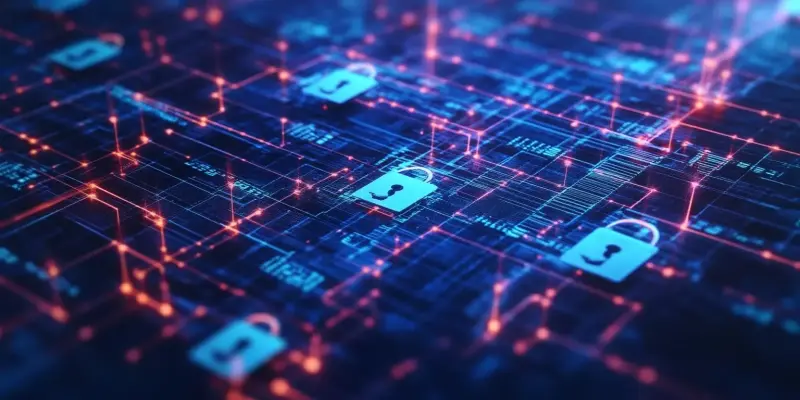In today’s interconnected world, the landscape of cyber threats has grown increasingly complex and sophisticated, compelling organizations to adopt proactive cybersecurity strategies. Protecting organizational and client data, as well as maintaining a firm’s reputation, has become more crucial than ever. This article delves into essential proactive measures that organizations can implement to effectively mitigate cyber threats.
The Financial Impact of Cybercrime
The Astonishing Cost of Cybercrime
Cybercrime Magazine projects that the financial impact of cybercrime will reach an astonishing $9.5 trillion globally this year. This immense economic toll underscores the urgency for firms to adopt a proactive stance against cyber threats. Cybercriminals continuously evolve their tactics, making it imperative for businesses to stay ahead by implementing and updating robust security protocols. This considerable economic impact drives home the point that cyber defenses must be strengthened constantly to stay ahead of malicious actors.
Regular Cybersecurity Audits
Regular cybersecurity audits, vulnerability assessments, and penetration testing are critical for identifying and mitigating potential security gaps. These evaluations help uncover weaknesses in systems, applications, and procedures that could be exploited. Conducting vulnerability scans and penetration testing allows organizations to simulate cyberattacks and assess their defenses’ resilience. These audits are necessary for ensuring compliance with industry standards and for the continuous improvement of an organization’s cybersecurity framework. Regularly scheduled assessments not only provide insights into current vulnerabilities but also help set a baseline for future improvements.
Developing Robust Cyber Policies
Clear and Actionable Protocols
Cyber policies and procedures are critical components of a firm’s cybersecurity strategy. Firms must avoid overly broad policies and instead develop clear, understandable, and actionable protocols. Employees need to be aware of the relevant parts of these policies and their required actions to maintain cybersecurity standards. Implementing robust password protocols is another essential aspect to protect sensitive information. Clear, actionable protocols ensure that every team member understands their role in safeguarding the organization’s data, thereby reducing the risk of breaches due to human error.
Employee Training and Awareness
Employee training and awareness are pivotal elements in cyber defense. According to the World Economic Forum, human error accounts for 95% of cyberattacks, with 43% of data breaches attributed to insider threats. Regular cybersecurity training, including phishing simulations and social engineering exercises, helps employees recognize and prevent potential cyber threats. For example, KnowBe4’s monthly phishing simulations significantly reduced employees’ susceptibility to phishing attempts. Educating staff about the latest threats and how to counteract them is crucial for building a robust human firewall within the organization.
The Role of Cyber Insurance
Mitigating Financial and Reputational Risks
Cyber insurance plays a crucial role in mitigating financial and reputational risks associated with cyberattacks. Cyber insurance policies cover costs related to legal fees, forensic investigations, client notifications, business interruptions, and reputation management. Many insurers provide access to training modules, testing platforms, and tabletop exercises to enhance an organization’s preparedness against cyber incidents. These policies act as a safety net, ensuring that the organization can recover swiftly without crippling financial burdens.
Tabletop Exercises
Tabletop exercises are an effective method for simulating real-world scenarios in a controlled environment to test a firm’s incident response plan. These exercises ensure that the response plan is comprehensive and actionable, enhance interdepartmental coordination, increase overall preparedness, and identify areas where additional training or resources are needed. By running these simulations, organizations can proactively identify gaps in their response strategies and address them before a real incident occurs.
Integrating Advanced Technology
The Role of Artificial Intelligence
The integration of advanced technology, particularly artificial intelligence (AI), is a significant trend in cybersecurity. AI offers solutions to human error and enhances cybersecurity efforts. For example, LinkedIn’s live cybersecurity training bots, such as chatbots that provide real-time security guidance to employees, exemplify AI’s potential in cybersecurity. These innovative tools can help organizations stay one step ahead of cyber attackers by predicting and mitigating threats in real time.
Technological Defenses
Other technological defenses include data encryption, multi-factor authentication (MFA), zero trust architecture, and regular updates and patch management. Encrypting data, enforcing MFA, adopting zero trust models, and ensuring all software and systems are up-to-date are essential measures to safeguard against unauthorized access and known vulnerabilities. These defenses form a multi-layered security strategy that reduces the risk of cyber incidents and helps protect sensitive information from malicious actors.
Investing in Cybersecurity Technology
Advanced Security Tools and Services
Investing in cybersecurity technology, whether through sophisticated AI solutions or dedicated IT professionals specializing in cybersecurity, is crucial. Advanced security tools and services are essential for effective crisis planning and incident response. Organizations must prioritize the integration of cutting-edge technology to stay ahead of cyber threats. With the rapid pace of technological advancements, staying current with the latest security tools is necessary for maintaining a robust cybersecurity posture.
Continuous Verification and Preparedness
Continuous verification and preparedness are essential strategies in the modern, interconnected world where cyber threats have evolved to become more intricate and advanced. Organizations are compelled to adopt proactive cybersecurity measures to safeguard sensitive data and maintain their reputation. Conducting regular risk assessments to identify potential vulnerabilities within an organization’s infrastructure is one crucial strategy. Additionally, implementing advanced encryption techniques and keeping software up-to-date are pivotal practices. Employee training programs focused on cybersecurity awareness can significantly reduce the risk of human error. Establishing incident response plans ensures organizations are prepared to react swiftly and effectively to any breaches. By adopting these measures, organizations can significantly enhance their resilience against cyber threats and protect their invaluable assets.

